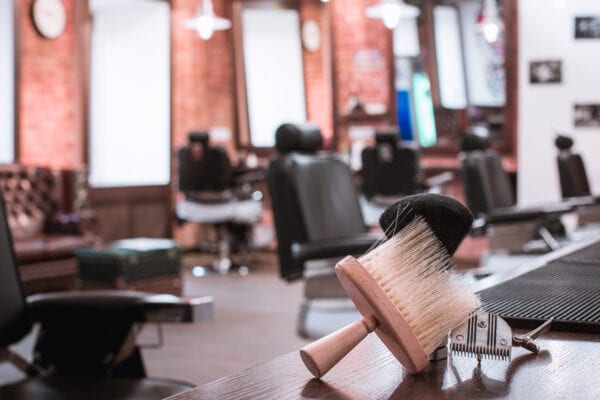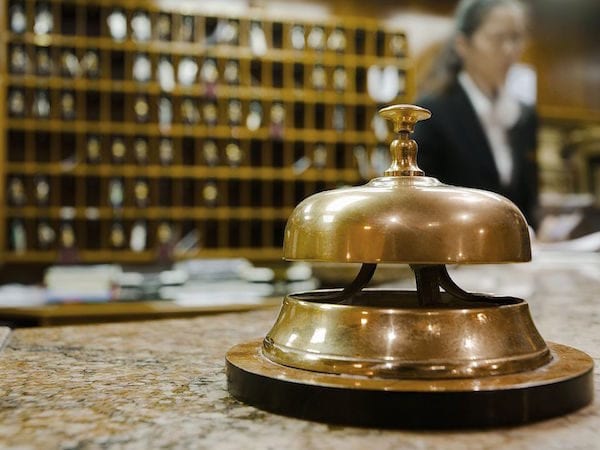To date, Coronavirus has infected over 200,000 individuals in over 120 nations around the world. We’ve quickly moved past preparatory stages into a realm of seeing first hand what the outcomes of a large-scale pandemic are. Running a small business can leave you with cash flow issues in the best of times, and many small businesses are trying to assess the ways in which they can stay in business through this crisis.
With governmental and consumer preferences rapidly shifting in an effort to stem the growth of the virus, even existing and soon to be expanded small businesses resources may not be enough for many small businesses to survive. Small businesses typically don’t have the cash reserves or credit of larger businesses. And typically a handful of individuals are responsible for managing all aspects of the business, making multifaceted threats like the coronavirus harder to handle.
Here at BusinessPundit we’ve provided business advice and commentary in a wide range of situations (though full-blown pandemic is new to us also…). While times are certainly challenging for many, many types of small business, we want you to know that with a little creative thinking and the right accomodations for the virus you can protect your business and go on to grow it more in the future.
For Restaurants and Bars

People need food, regardless of a health crisis. And while a greater percentage of that food may be coming from individuals’ kitchens at home, many people are still eating out or ordering delivery.
While some restaurants (and many bars) will undoubtedly have to close through parts of the outbreak, there are definitely a few ways you can position your small food establishment to weather the storm.
The largest predictor of how you should weather the current pandemic comes in the form of what restrictions or guidance your national, regional, and local governments have put into place.
If you are in a location that’s under full quarantine, you may still be able to run your restaurant, but as a food delivery service.
If you’re in a location where 50 or fewer individuals are allowed to congregate, all but the largest restaurants should be able to stay open to some degree. If you’re a restaurant with a larger capacity, cap your doors 50 (including employees) and use the extra space to provide some distance between diners. Some restaurants have used this tactic as a selling point to potential customers by putting up signs noting that they are implementing “social distancing” within their restaurants.
If you’re in a location where the guidance is that 10 or fewer people should meet (as the entirety of the United States is presently), you’re in a tougher spot. Balancing the minimum number of staff you need can allow you some throughput. And higher-end dining locations that typically cater to small groups may be spared.
Location also matters and food service businesses that have the ability to cater to different locations have seen better outcomes than those without access to delivery or food truck services. As larger and larger groups of individuals have been home-based in the past weeks, restaurants in city centres have struggled. Restaurants in residential areas and without large dining areas have been largely unaffected in many locations.
Catering for large events is — predictably — non-existent, but many catering companies have been able to pivot through providing take home meals and by targeting local groups of individuals who are both working from home and have children around.
Examples and Resources
- The LA Times’ List of Coronavirus Resources for Food Service Locations and Workers
- Quicksprout’s guide to selling food online
For Tourist Destinations

Just because many of the largest tourism destinations are closed to the public doesn’t mean productive work can’t be done. Many businesses that rely on — temporarily paused — face-to-face interactions are beginning to use this time as a “spring cleaning” of sorts.
While you may not be able to serve your visitors in a typical fashion, business not-as-normal can be a good time for creative thinking about how your organization works in the future.
Additionally, most tourism destinations own media assets and are at the center of communities. These two elements can be leveraged for organizational outcomes even with the closing of a physical location.
So what does this all mean? Tourist destinations haven’t lost the interest of the public. There’s just a temporary “hiccup” in the plans of visitors. Make use of what makes your tourist location interesting to release online events, share your media assets to build your audience. And use this lull in tourism to really hone in on what you actually need to maneuver successfully.
While some of these points apply to many industries, we think these points are particularly important for tourism locations that may have relied on fame won in the past to keep their doors open. Using challenges such as the current pandemic to update your offerings, touch base with your community in creative ways, and even help with pandemic relief can be great future benefits.
Examples and Resources
- Google Expeditions Allows You To Explore National Parks From Home
- 2,500 Art Museums You Can Tour Online
- Live Streaming of the Pope’s Masses
For Barbers, Tattoo Parlors, Nail Salons

As of now, few locations have become “locked down” to the extent where barbers, tattoo parlors, nail salons, and similar services have had to shut down 100%. And the few locations who have imposed city, regional, or nationwide lockdowns have not lasted for prolonged periods of time.
With this said, moderate “social distancing” education as well as populations that are spending a greater percentage of time at home on principle are less likely to seek out many of these service types.
As with tourist destinations that primarily rely on in-person visits for business, this type of business can use this time to shore up their business in some innovative ways. Discretionary beauty-related services can ramp up their online presence, or use the down time to rethink how they want to present their business in the future. Tattoo parlors and higher end barbers tend to have the most to gain from bolstered social media presences. Additionally, if your region hasn’t excluded non-essential activities, you may find you can replace some no-show clients with new clients through PPC marketing, SEO, and other digital marketing techniques.
For service locations of these types that are experiencing some traffic, providing ample explanation as to policies that promote sanity and safety may be a way to bring in clients who are on the fence about an optional activity. Limit the number of people in your waiting room and ensure clients book appointments before showing up. Clearly state that this is a policy being enacted as a Coronavirus response, and that you’re limiting the number of people in your work space to below recommended levels.
Examples and Resources
- NBC’s coverage of the state of barbers and salons during Coronavirus
For Construction Businesses

Construction businesses seem to be operating along the principles of “wait and see” nationwide, with many of the hardest hit areas not deeming construction as an “essential service” through the outbreak.
With that said, there are still countless small contracting businesses operating. And we’ve gathered a few tips that may be of use for weathering this crisis safely. First and foremost, you don’t want to get into territory where you’re performing work that’s not on the same page with your clients. In all likelihood your clients may be trying to gauge their commitments to larger building projects. It’s prudent to check in with clients, explain the pros and cons of different “stopping points” within projects, and ensure they’re on the same page with continued construction. This can help to avoid situations in which you’ve completed work “full steam ahead” and your clients were expecting you to slow down so they can focus on other priorities.
The good news is that many contracter businesses and construction firms already have some knowledge of boom and bust cycles. And if they’ve been around for any length of time likely have some notion of how they’ve weathered such cycles in the past.
One additional risk of projects being undertaken now is that specialist contractors could become quarantined in highly affected areas. Crane operators, mechanical and electrical workers may be in short supply. All of this is to say that construction can — in many locations — go on, but should with an eye towards being able to stop projects safely if needed.
Finally, more than 30% of building supplies used in America come from China. This isn’t to say that there aren’t surpluses of many of the most commonly used building supplies, but that as the pandemic drags on, you should be aware of the supply chains that you rely on most heavily and what may be stressing them.
As with other industries, there’s no reason why this time can’t be productive even if your primary operations are greatly slowed or shut down. Use this time to rethink your relationship to your clients, to reach out to your community, or to build greater influence online. It can also be a good time to catch up on neglected administrative work including taxes, proposals for new projects, and the outlining of new policies within your workspace.
Examples and Resources
- Engineering News Records’ Coverage of Construction and Coronavirus
For Hotels

Even among locations with the most restrictive movement due to Coronavirus, travel does go on. Hotels and lodging locations have also gotten a new outlook in some locations where they have been repurposed as lodging for emergency care workers or even as additional hospital rooms (as is the case around Seattle).
There are inherent risks and certainties within the hotel industry that are different from other business types in relation to the pandemic. Guests typically stay for at least an entire day, leading to lower throughput and potentially lower exposure to the virus. Additionally, lodging settings already have a cleaning process built into resetting their units. With that said, there’s also a larger workforce dealing with potentially “germy” artifacts for a longer period of time than in other business settings.
All of this adds up to a scenario where hotels, more than almost any other business location need to ensure that policies are in place to keep workers safe. By sharing appropriate policies with hotel guests and essentially showing that business under a pandemic is not “business as usual,” you can also instill greater confidence in guests as well. After all, your lodging establishment is where they are choosing to be kept “safe” for a period of time during a pandemic.
Additionally, lodging locations slightly off the beaten path are actually seeing upticks in guest requests. Many individuals effectively kept at home with their children in larger metros are choosing to take the time to visit more rural locations. With the proper focus on marketing as well as professionalism and communication regarding the cleanliness of your property this may be a time where higher than normal returns are possible.
Examples and Resources
- HospitalityNet’s Coverage of Coronavirus’ Effect on Hotels
- Forbes’ Master List of Hotel Policy Changes
For Knowledge Workers

A large percentage of knowledge workers have already worked from home to some degree. Additionally, many industries are looking for knowledge work-enabled products more than ever to help cover inefficiencies brought to light by the pandemic.
With this said, many larger organizations have never worked from home at scale. There are inherent IT risks and challenges with moving particularly higher-level employees to remote work. And your business should first and foremost ensure that cyber security and protection of intellectual property are foremost with individuals likely to be working from novel networks.
While all of the above is certainly important, what many now-remote organizations are primarily focused on are new management styles and how to ensure both employee well-being as well as productivity in new settings. With many employees faced with logistical challenges stocking up their home with essentials, as well as children home from school, some degree of additional support from employers will be required. Many businesses are offering credits for food delivery services or complementary counseling through this time.
Much as higher education has had to quickly educate instructors on remote classroom management and content creation, the highest impact many knowledge work organizations can make on this transition is to help with the education of managers within your organization.
Examples and Resources
- Linkedin’s Working From Home Resource Hub
- Harvard Business Review’s Guide to Managing Remote Employees